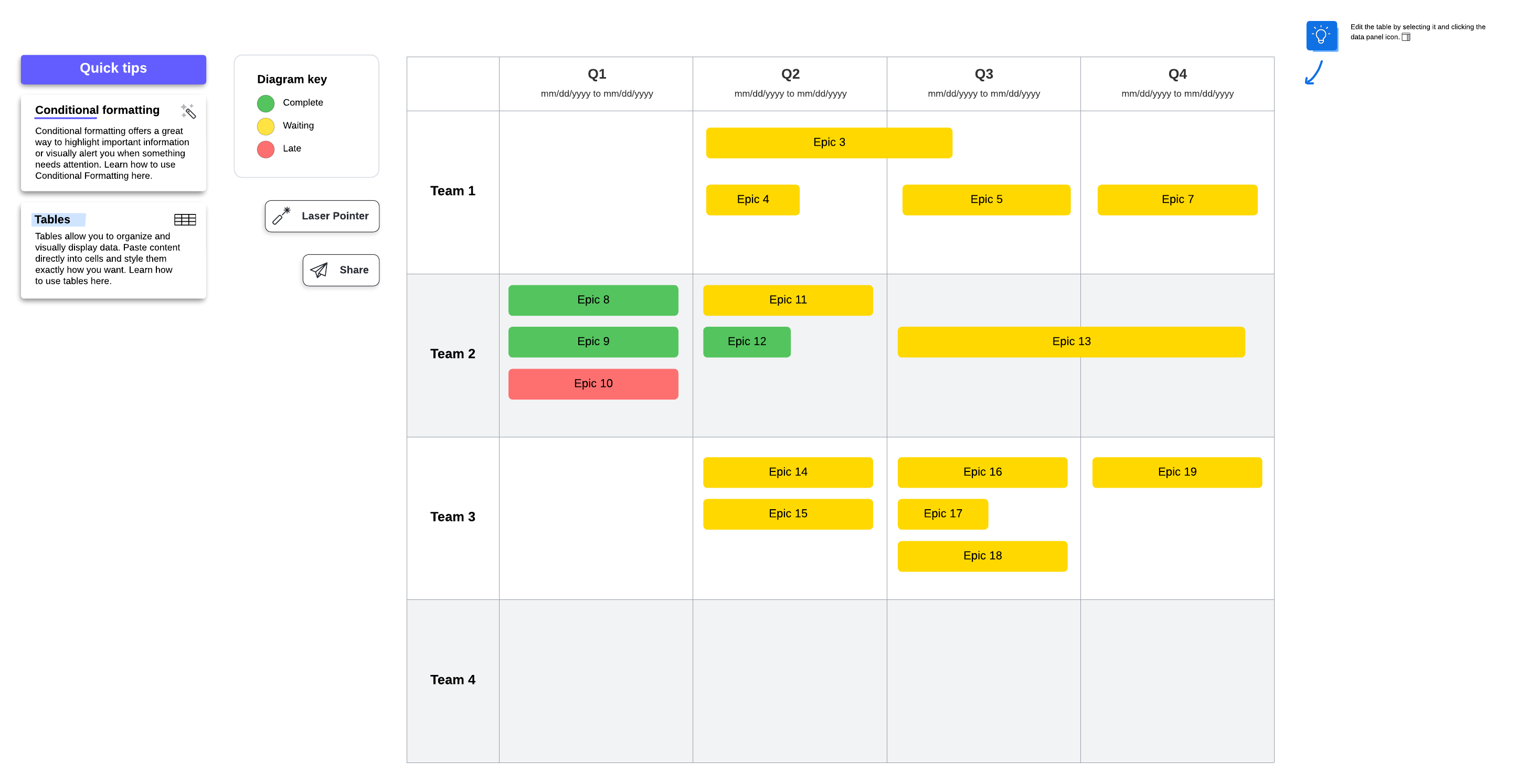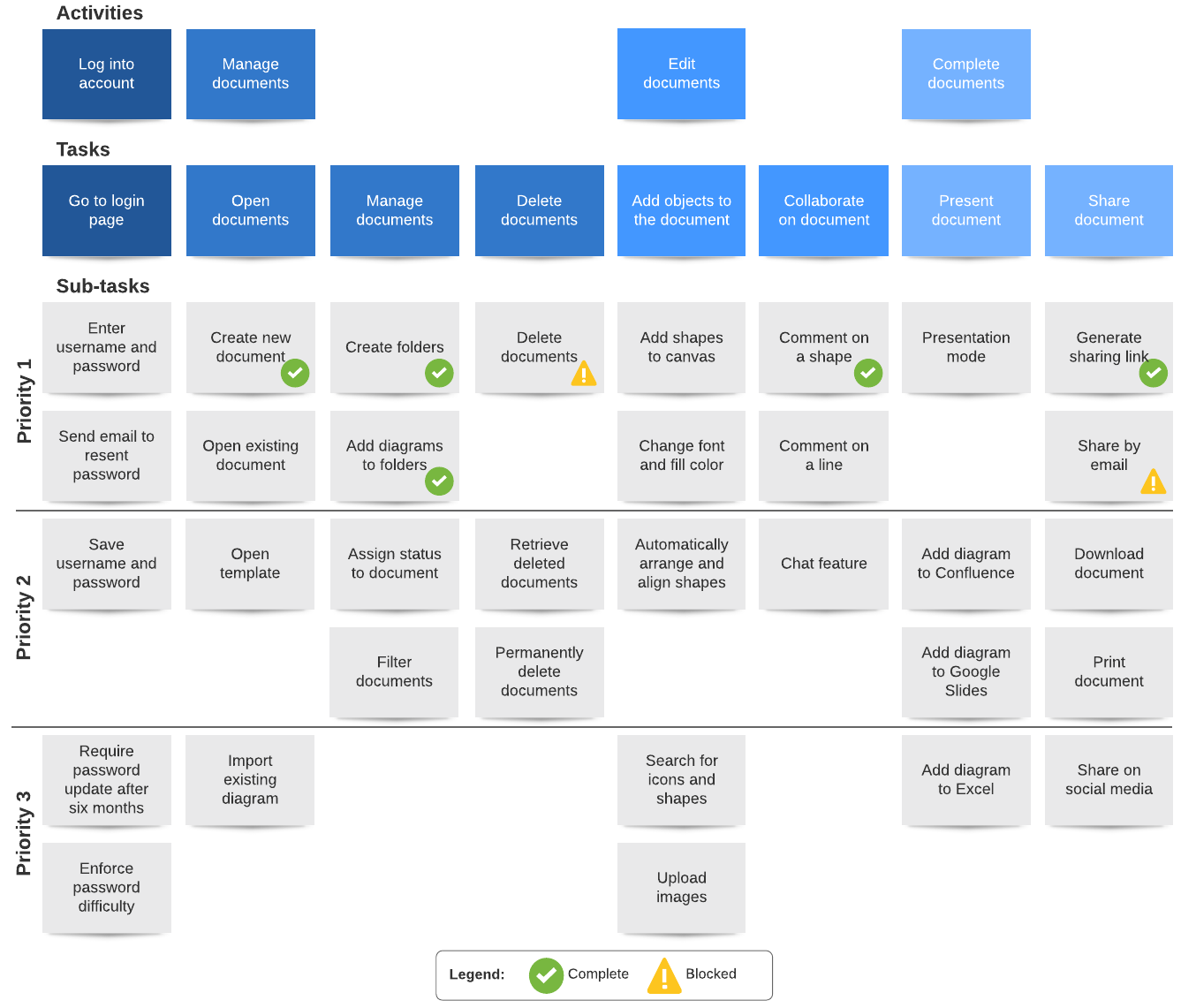
How to align product strategy with company goals as your organization scales
Reading time: about 6 min
Topics:
Think back to the last time you planned a vacation or a road trip. More than likely, you had a clear destination in mind and planned your path, accommodations, and budget accordingly. If you took a more spontaneous trip, you likely weren't tied to any specific outcome. A fun trip to be sure—but not one you'd take if you had clear goals or destinations in mind.
The same holds true when it comes to your product roadmap. When revenue is on the line, "let's see where the road takes us" is not a strategy for success. A product roadmap is just that—a path to follow to meet an end destination or goal. Your company has specific goals in mind, too, and as the company grows, so do the chances for misalignment across the organization.
Let's take a look at why it's important to align product strategy with company goals to ensure your product roadmap and your company vision don't end up miles apart.
Importance of aligning product strategy to organizational strategy
A good product roadmap is one that helps fulfill the company's vision or mission statement.
Consider Google's company mission statement: "to organize the world's information and make it universally accessible and useful." How might that vision translate to the way products and services are developed at Google? It wouldn't make sense for Google product teams and engineers to design for limited demographics or geographic areas in this context.
Whether or not they're always successful, a successful product roadmap would consider how every user interacts with and uses the product, regardless of their background or where they happen to live. Anything less would not align with company goals and strategies, and both trust and reputability are at risk.
However, because that vision may evolve over time, it's also essential to build flexibility into your product development strategy—and staying aligned with company strategy shifts requires more than just collaboration.
Tips for aligning product strategy with company strategy
It's not enough to merely know and understand the company strategy. You need to build actionable steps to build and maintain this alignment into the way your product team works every day. Here are a few ways to do that.
Understand the company strategy and goals
Clarifying your company goals and strategy is a critical first step in the alignment process. Too often, ambitious product teams innovate, develop, and create in a vacuum.
The motivation may be good, but if you’re not aligning the product roadmap with company goals from the start, that misalignment will still result in detours, roadblocks, and reroutes. If the company vision isn't already clearly communicated, it's still your responsibility to understand it.
-
Go hunting: Hunt down recent company-wide presentations, board meeting recaps, or recordings of all-hands meetings. In many cases, company-wide strategies and goals must be communicated to the C-suite, investors, and board members—and these are the same company goals those stakeholders will ask about during the next quarterly meeting.
-
Follow the money: Often, strategy precedes revenue. Sometimes it chases it. Where is your company spending and earning money? What revenue objectives are executives behind held to? The answers to these questions will give you a good idea of where your company's strategic priorities lie.
-
Share your vision: If a clear company vision and roadmap don't exist in those places, then the product team may have an opportunity to help shape them from the start.
Always keep the customer in mind
The most successful companies always keep customer needs top of mind. After all, what good is a quality product if there is no demand or market for it? Ask yourself what your current and prospective customers are asking for. After all, they're your primary revenue—and strategy—drivers. Maintaining a customer-centric mindset will help you stay aligned with the most important part of your company strategy.
Find where product goals and company goals match
Hopefully, at least some of this alignment already exists. But even if there is a big gap between your product roadmap and company goals, it's possible to right the course and achieve alignment. Compare your product roadmap to your company vision and mission statement and conduct a quick gap analysis to help you visualize precisely where product development is already laddering up to company objectives.
Visualize your current and future state for organizational scale
Creating current state and future state diagrams can help you evaluate and visualize exactly where you are in your product strategy roadmap and where you want to be. Incorporating your as-is and long-term company strategy goals in this diagram can help you visualize how product strategy can support company goals as the organization scales.
Communicate with marketing and sales
Of course, product development teams aren't the only ones striving to align their objectives to larger company goals. As primary demand-gen and revenue generators in the organization, marketing and sales have the incentive to stay closely aligned to broader strategic objectives.
While the product organization and product marketing often work in close concert, it's important to extend that collaboration to other marketing functions and to the sales teams who receive more direct feedback from prospective and current customers. This intel provides critical context and input for your product roadmap.
Get buy-in from leadership
Once you've done your best to align your product strategy to company goals, the best way to gut-check your approach is to go straight to the source. Set up some conversations with key executive stakeholders and test your approach. Incorporate their feedback and repeat this process as your organization continues to grow.
Product strategy tools
It's easy for product teams to get lost in the weeds of individual tasks and daily deadlines. Implementing product strategy tools can help you maintain team alignment and quickly and easily visualize and understand priorities and stay focused on the bigger picture.
Product roadmap
Like other maps, a product roadmap is a tool that helps you navigate from one destination to another. When it comes to product development, these diagrams plot out and track the progress of a product or service over time at both a high-level macro level and a micro, day-to-day level. Most importantly, they provide an action plan to keep stakeholders informed and teams moving toward the same goal.

Business model canvas
A business model canvas can help you prioritize your efforts, based on the information you currently have. Created by business theorist and Strategyzer founder Alexander Osterwalder, a business model canvas condenses strategic planning to a single page to give you a bird’s-eye view of your company's overall strategy. This overview provides your product team the comprehensive view they need to ensure your product strategy aligns with larger company goals.

Customer journey map
For product and development teams, the end-user is king. Customer journey maps or user story maps help product teams understand what customers need, what they're looking for, and how they will use and interact with your product to achieve those desired outcomes. By mapping out the customer journey, you can clearly identify roadblocks and gaps in your product, prioritize feature requests, and quickly communicate how those requests help to achieve larger company goals.


One of the biggest challenges for a product manager is aligning product strategy with company goals and the organizational strategy as the business scales. Establishing a culture of collaboration and incorporating visualization tools can help you continue to develop products and experiences customers love while staying aligned to the goals that will drive the business forward.

Create a next-level product roadmap in five steps.
See the tutorialAbout Lucidchart
Lucidchart, a cloud-based intelligent diagramming application, is a core component of Lucid Software's Visual Collaboration Suite. This intuitive, cloud-based solution empowers teams to collaborate in real-time to build flowcharts, mockups, UML diagrams, customer journey maps, and more. Lucidchart propels teams forward to build the future faster. Lucid is proud to serve top businesses around the world, including customers such as Google, GE, and NBC Universal, and 99% of the Fortune 500. Lucid partners with industry leaders, including Google, Atlassian, and Microsoft. Since its founding, Lucid has received numerous awards for its products, business, and workplace culture. For more information, visit lucidchart.com.
Related articles
How to develop a project strategy for organizational success
When it comes to project management, quality is more important than quantity. Stop wasting valuable resources—narrow your initiatives down to those that align with your overall company vision. Learn how to align your project strategy and prioritize projects.
How to pivot your business strategy quickly
It's not uncommon for businesses to reach a point that requires a shift to ensure the company can stay successful. Learn how to quickly and effectively pivot strategy.
